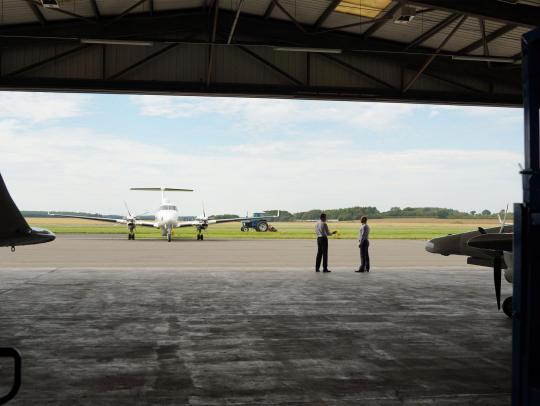SES demonstrates new tactical surveillance solution

On 22 September SES launched SES’s first Government+ product offering, Tactical Persistent Surveillance. The solution was showcased in Reston, Virginia
A tethered aerostat, hovering over a cricket field 20 miles outside Washington, DC, sent live video sensor data collected across the city of Reston, Virginia to a portable ground control station below, where attendees watched as analysts reviewed the real-time images and information.
The aerostat is an integral part of SES’s new fully integrated portable surveillance and communications solution, called Tactical Persistent Surveillance (TPS). The platform, SES’s first Government+ product offering, has been designed to provide enhanced situational awareness for border security, special event monitoring, disaster response missions and humanitarian efforts around the world. TPS can be set up and achieve operational status in 30 minutes or less, even in areas where infrastructure is non-existent or destroyed.
The solution is based on Lighter-Than-Air (LTA) inflatable aerostat technology, which hosts a broad range of advanced electro-optical (E/O) sensor and communications payloads at altitudes up to 1,000 feet. The sensor aboard the aerostat can transmit Intelligence, Surveillance and Reconnaissance (ISR) video and data over satellite to collaboration teams at a central monitoring center using small aperture and quick to deploy flyaway Ku-band antennas.
Using the same satellite antenna that transmitted the sensor video, SES established a two-way Internet circuit, providing the portable ground control station with a broad range of IP communications services, including email, video streaming, Intranet, VoIP, capable of supporting remote mission-critical applications such as Biometric Identification capabilities.
As part of its modular design, TPS incorporates a MIMO (Multiple Input Multiple Output) radio technology and provides a mobile ad hoc mesh communications network capable of supporting 3G, 4G, LTE or WIMAX broadband connectivity up to 20 miles from the sensor. IP from the SATCOM circuit is distributed throughout the network fully enabling any IP device. Radio throughput is high speed at 70 Mbps TCP IP or 85 Mbps for UDP video streaming. Up to 380 field radios can be deployed in a single network, each acting as a relay to the next extending the reach even further.





